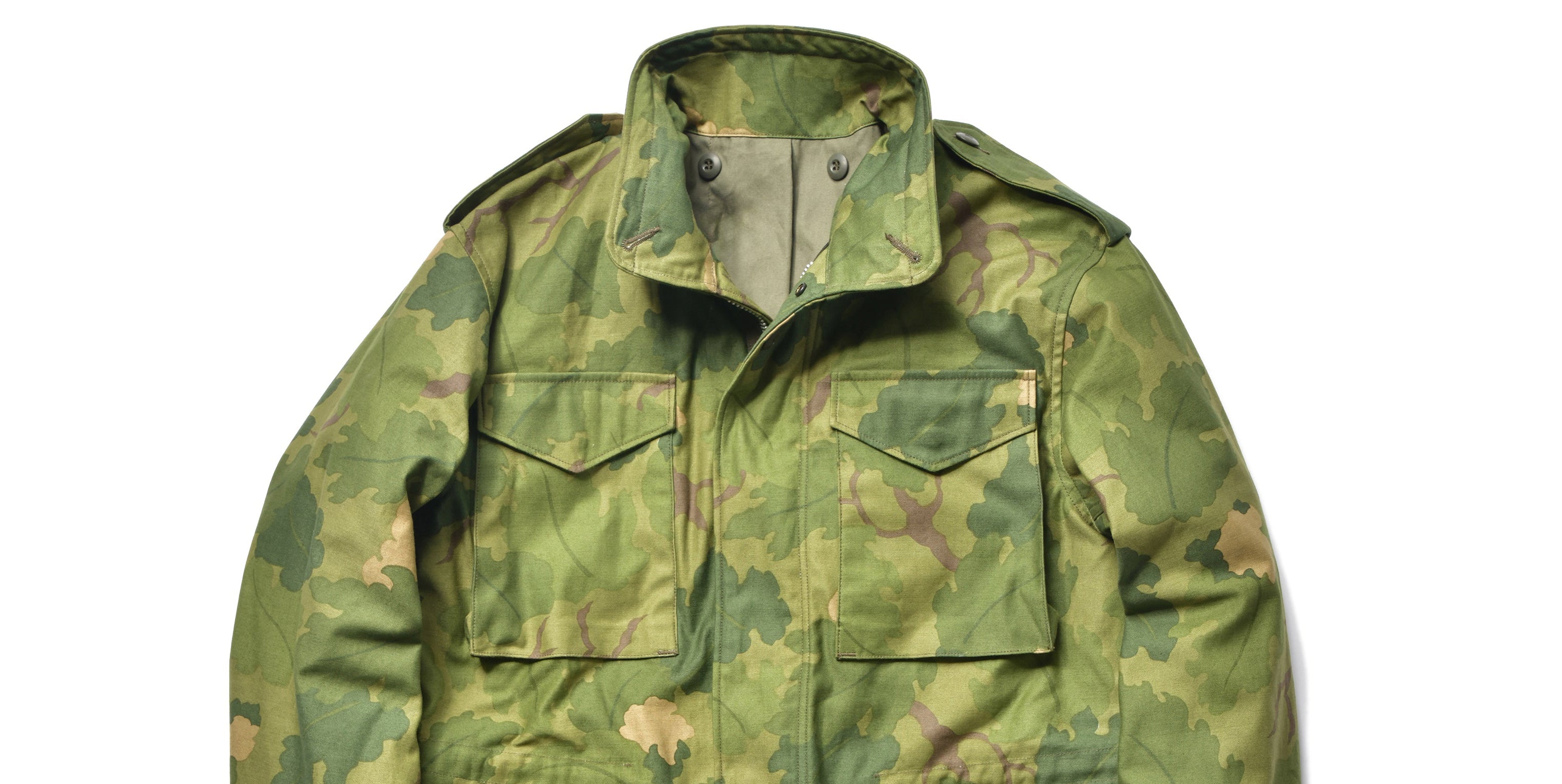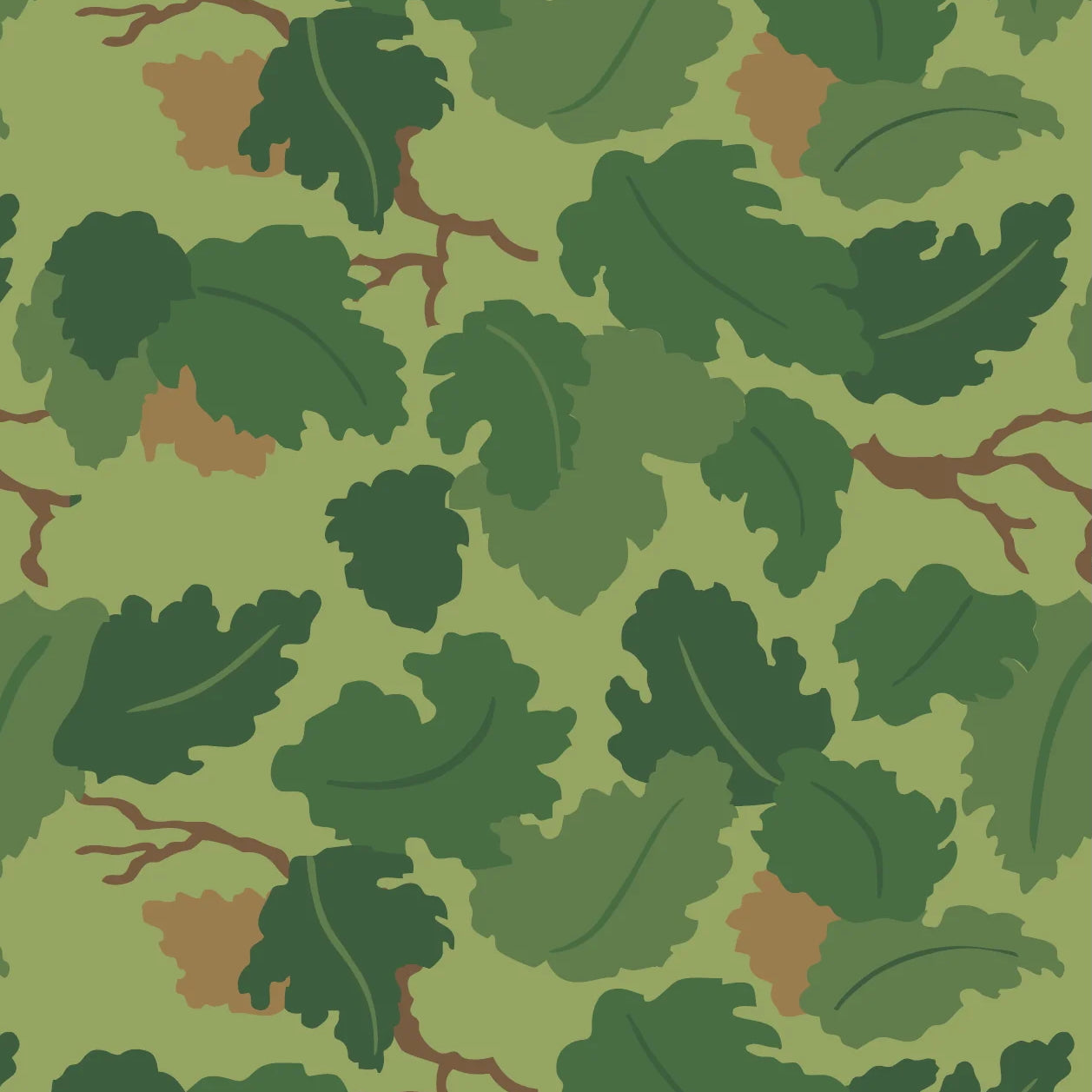The Mitchell Camouflage pattern was subjected to extensive field testing between 1948 and 1953, which included a notable trial in Panama evaluating eight different designs. The green-hued "Wine Leaf" pattern, ideal for bright foliage, and the brown "Mitchell" pattern, named after Meldon Mitchell, emerged as particularly effective. This combination was designated as Pattern-53 and became synonymous with both sides of the reversible design. The pattern's use expanded beyond the Marine Corps to other branches of the U.S. military, including the Army and Navy during the Vietnam War. Although primarily used for helmet covers and shelter halves, the pattern's popularity led to its application in various garments through custom orders, especially from local tailors in places like Okinawa. These custom pieces included boonie hats, shirts, pants, and jackets, reflecting the pattern's widespread acceptance and utility.



